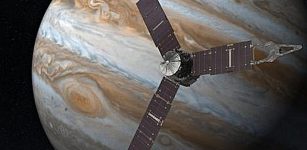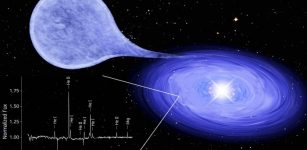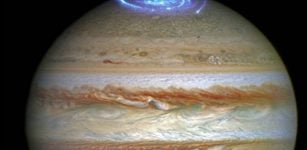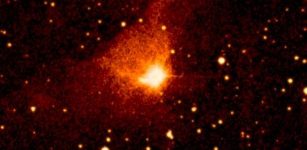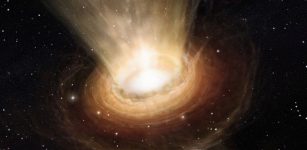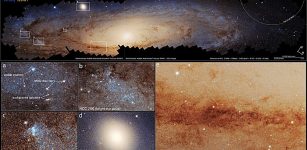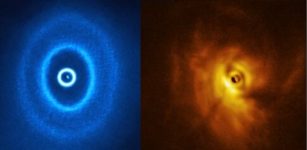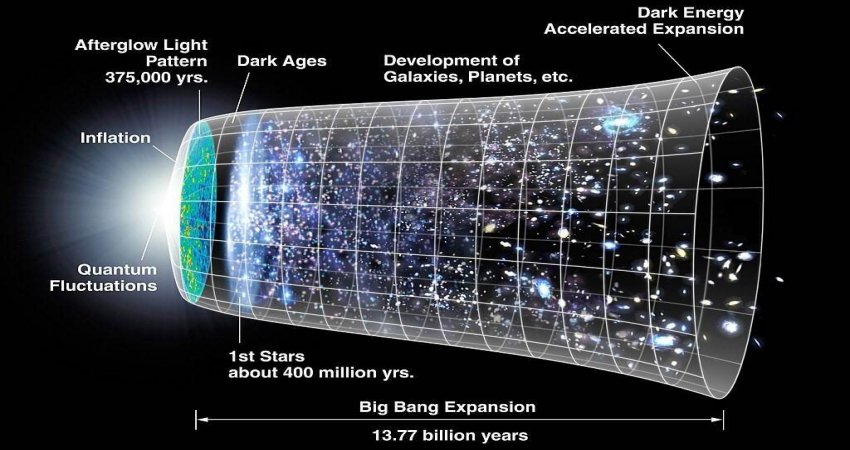Asteroid Bennu’s Mysterious Particle Events – Explained
Eddie Gonzales Jr. – MessageToEagle.com – After traveling for approximately two years, NASA’s OSIRIS-REx spacecraft arrived at asteroid Bennu in December 2018, and began 505 days of surface mapping at a distance of approximately 5 km (3.1 mi).
Then, the mission’s science team made an unexpected discovery, revealing that the asteroid could be active, or consistently discharging particles into space.
 This view of asteroid Bennu ejecting particles from its surface on January 6 was created by combining two images taken by the NavCam 1 imager onboard NASA’s OSIRIS-REx spacecraft: a short exposure image (1.4 ms), which shows the asteroid clearly, and a long exposure image (5 sec), which shows the particles clearly. (Photo: NASA/Goddard/University of Arizona/Lockheed Martin)
This view of asteroid Bennu ejecting particles from its surface on January 6 was created by combining two images taken by the NavCam 1 imager onboard NASA’s OSIRIS-REx spacecraft: a short exposure image (1.4 ms), which shows the asteroid clearly, and a long exposure image (5 sec), which shows the particles clearly. (Photo: NASA/Goddard/University of Arizona/Lockheed Martin)
Researchers began to examine Bennu and the sample of it, to learn more why this intriguing phenomenon is occurring.
At first glance, the particles appeared to be stars behind the asteroid, but a closer examination revealed that the asteroid was ejecting material from its surface.
“Among Bennu’s many surprises, the particle ejections sparked our curiosity, and we’ve spent the last several months investigating this mystery,” Dante Lauretta, OSIRIS-REx principal investigator at the University of Arizona, said in a press release.
“This is a great opportunity to expand our knowledge of how asteroids behave.”
The three largest particle ejection events were observed on Jan. 6 and 19, and Feb. 11, and concluded that the events originated from different locations on Bennu’s surface.
The first event originated in the southern hemisphere, and the second and third events occurred near the equator. All three events took place in the late afternoon on Bennu.
The team found that, after ejection from the asteroid’s surface, the particles either briefly orbited Bennu and fell back to its surface or escaped from Bennu into space. The observed particles traveled up to 10 feet (3 meters) per second and measured from smaller than an inch up to 4 inches (10 cm) in size.
Approximately 200 particles were observed during the largest event, which took place on Jan. 6.
The team also determined that thermal fracturing is another reasonable explanation.
Bennu’s surface temperatures vary drastically over its 4.3-hour rotation period. Although it is extremely cold during the night hours, the asteroid’s surface warms significantly in the mid-afternoon, which is when the three major events occurred.
“It could be that more than one of these possible mechanisms are at play,” said Steve Chesley, an author on the paper and Senior Research Scientist at NASA’s Jet Propulsion Laboratory in Pasadena, California. “For example, thermal fracturing could be chopping the surface material into small pieces, making it far easier for meteoroid impacts to launch pebbles into space.”
Read more – here
Written by Eddie Gonzales Jr. – MessageToEagle.com Staff

